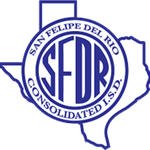
What is T-TESS?
T-TESS strives to capture the holistic nature of teaching – the idea that a constant feedback loop exists between teachers and students, and gauging the effectiveness of teachers requires a consistent focus on how students respond to their teacher’s instructional practices. For those reasons, each of the observable domains in T-TESS focuses on teachers and students rather than separating them out into separate domains. Ultimately, T-TESS is a process that seeks to develop habits of continuous improvement, and the process itself best leads to that outcome when appraisers and teachers focus on evidence-based feedback and professional development decisions based on that feedback through ongoing dialogue and collaboration.
How was T-TESS developed?
T-TESS was developed by a steering committee comprised of teachers, principals, and representatives from higher education and educator organizations. They began their work in the fall of 2013 by updating teacher standards and, through the spring of 2014, continued with building a rubric tied to the standards. While the Texas Comprehensive Center at SEDL and the Texas Education Agency (TEA) facilitated the process, T-TESS is a system designed by educators to support teachers in their professional growth.
What are the components of T-TESS evaluation and on what are teachers rated?
T-TESS includes three components:
- Goal-setting and professional development plan
- The evaluation cycle (including: pre-conference, observation, post-conference)
- Student growth measure
What the Four Domains of the T-TESS Rubric?
- Overview
- Implementation Guidebook
- 2025-26 T-TESS Appraisal Calendar
- T-TESS Rubric Stylized Version
- T-TESS Rubric Working Copy
- T-TESS Resources/Tips
- T-TESS Second Observation Appraisal Request Form
- Appraiser EOY Conference Overview
- Appraiser Handbook
- Calibration Protocol
- Documentation Recommendations
- Observation Evidence Sheet
- Planning Domain - Collecting Evidence
- Post-Conference Plan Template
- Sample Conference Questions
- T-TESS Skill Dimension Crosswalk
- T-TESS Flip Chart - Full Domains
- Look-For Cards
- Scripting Form
- Post Conference Planning Template
- Creating SMART Goals for GSPD Tutorial
- Domain-Dimension Overview
- Goal Setting & Professional Development Plan Template
- EOY Conference Overview
- Goal-Setting & Professional Development (GSPD)
- Post-Conference Self-Reflection Form
- Teacher Goal-Setting & Professional Development (GSPD) Plan Process Overview
- Teacher Handbook

